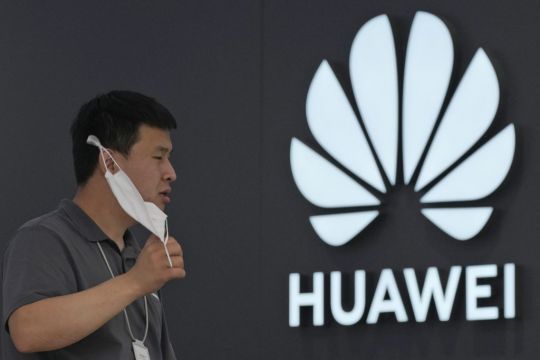Huawei has launched its own HarmonyOS mobile operating system on its handsets as it adapts to having lost access to Google mobile services two years ago after the US put the Chinese telecommunications company on a trade blacklist.
The Shenzhen-based company announced that about 100 Huawei smartphone models will use its proprietary HarmonyOS system, and that the operating system will also be available on certain tablets and smart screens in the fourth quarter of the year.
The launch of the operating system comes as the company is still cut off from American technologies including Google’s services and some computer chips to power its devices after the US put it on an “entity list”, saying Huawei might aid China’s espionage efforts, an accusation the company vehemently denies.

Huawei’s inclusion on the list restricts American companies from doing business with the Chinese telecommunications equipment and smartphone maker. The blacklist has been a critical blow for Huawei, which has relied on essential technologies from the US.
“The user experience of HarmonyOS has surpassed the experience of the Android era. We solved issues such as the slowing down and lagging of devices over time in the Android era,” said Richard Yu, CEO of Huawei’s consumer unit, in an online product launch event.
“Our HarmonyOS has stronger functionality and endurance, and it will be the greatest operating system in this internet of things era,” he said.
Once the world’s largest smartphone maker, Huawei fell out of the top five globally last year, nudged aside by South Korea’s Samsung, according to data from market research firm Canalys.
Other Chinese smartphone makers such as Xiaomi, OPPO and Vivo have since overtaken Huawei in terms of global sales. Huawei currently ranks seventh globally and third in China following a 50% drop in smartphone shipments in the first quarter of this year compared to last year.
Huawei’s HarmonyOS smartphone rollout is a workaround for its lack of access to Google services, especially for smartphones that it sells abroad. While handsets that were sold prior to Huawei’s blacklisting continue to run Google services, its newer devices will have no access to Google’s mobile services or updates.
To solve this problem, Huawei launched its own Huawei Mobile Services (HMS) platform that lets developers launch apps for Huawei devices. In March, Huawei said that over 120,000 apps are now on its app store and using HMS, although it is still missing apps popular overseas such as Instagram, Twitter and Facebook.







